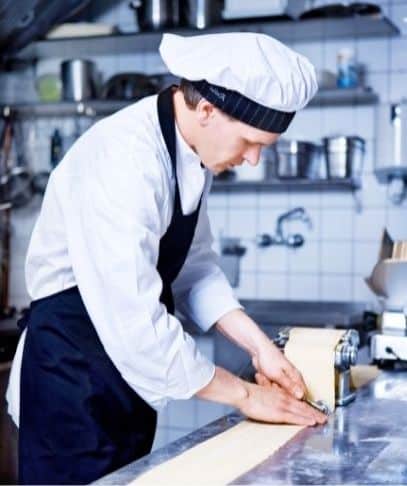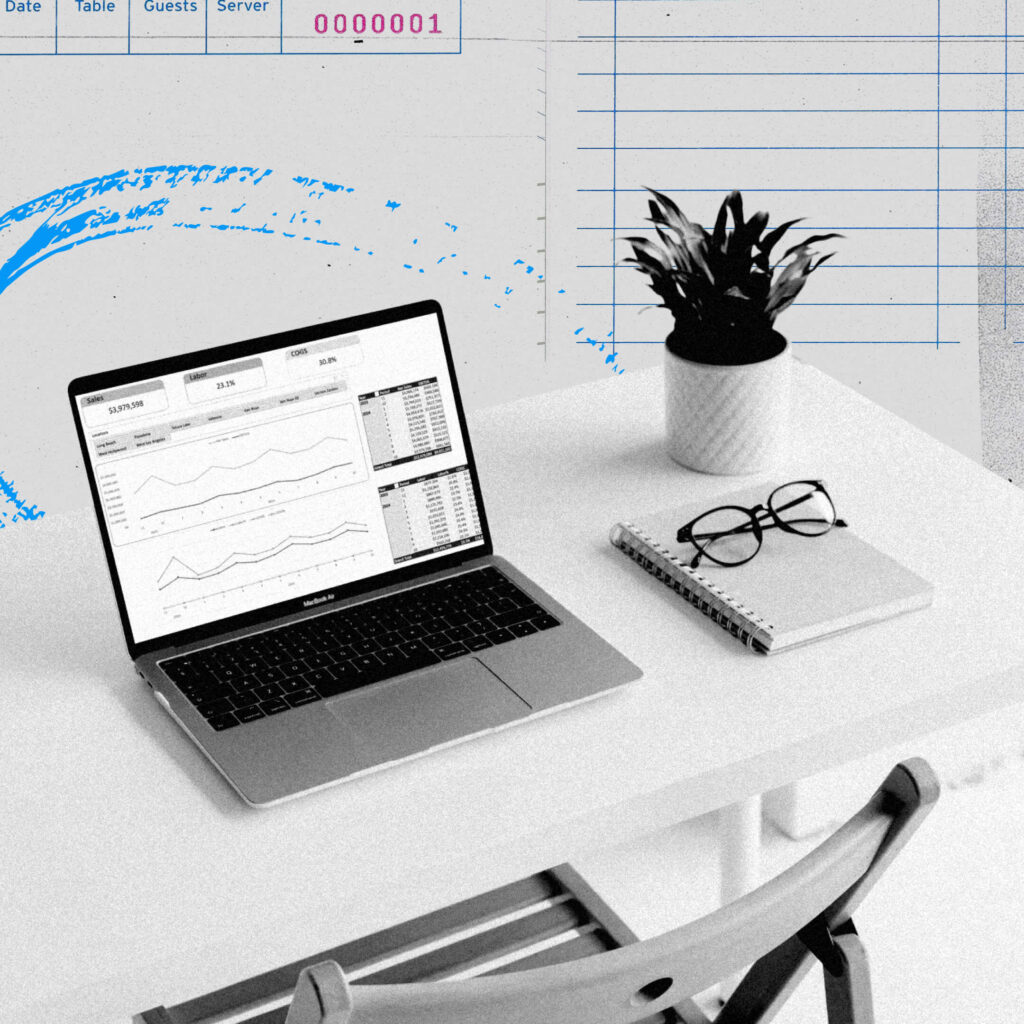Restaurant food waste is a pressing topic in the food and restaurant industry. Studies show that about 35% of all food produced in the United States goes unsold or uneaten. The EPA estimates that food makes up 24% of what reaches landfills, which means more food reaches “landfills and combustion facilities than any other single material in our everyday trash.”
However, the impact of food waste doesn’t just stop at landfills. Food waste also represents wasted water, energy, resources, and labor that were required to grow, transport, and store it.
As a food service business, your restaurant has an enormous opportunity to reduce food waste. With today’s increasingly environmentally focused diners, addressing food waste is an opportunity to showcase your commitment to sustainability.In addition, reducing food waste can also be a great opportunity for your restaurant’s bottom line. Less food waste means lower Cost of Goods Sold (CoGS), helping improve your restaurant profitability.
It’s been found that restaurants can actually save a significant amount of money by implementing food waste reduction techniques. A report studying 114 restaurants across 12 countries found that the average restaurant saved $7 for every $1 invested in reducing kitchen food waste.Are you ready to see what you can implement to start reducing your restaurant food waste? Here are 15 practical tips.
1. Start by auditing your food waste
First, to reduce your food waste, you need to analyze what your restaurant food waste currently looks like. This process can get a little messy, but the results will be invaluable for your food waste reduction strategy.
You need to be able to track exactly what kind of waste your restaurant is generating, weighed out by different categories. Divide your recyclables, trash, food waste, etc., by either temporarily setting up different waste bins or by sorting through waste at the end of a shift.
Once you take a couple shifts to track waste, you can multiply each category weight by a month, quarter, or year, to find out your total waste footprint.
This detailed data will give you insight into the makeup of your waste stream, as well as a number against which to measure your progress. From here, you can determine the best plan for your efforts.
2. Analyze your actual vs. theoretical food usage
One of the best places to start addressing food waste is by examining your actual vs. theoretical (AvT) food cost variance. Your AvT represents what you should have spent on food based on your sales, versus what you actually spent. The variance between the two numbers represents food waste that may have been caused by kitchen portioning errors, prep mistakes, server errors, or other mistakes.
AvT can help you track where your biggest food waste lies. Start by examining the items that have the largest variance, diving into their usage to find the root cause of waste. As you start to make progress on the items with the largest variance, you can work your way down the list.
3. Educate your staff on reducing food waste
Your employees are the ones who have their hands in the day-to-day reduction efforts, so they need to be invested. While food waste reduction is extremely beneficial in the long-term, it requires some additional work to properly store, monitor, and use inventory ingredients.
Consider creating a team of staff members who are responsible for spearheading food waste reduction efforts. Explain why you are implementing a plan to reduce food waste and share the restaurant’s progress with them. Make sure to highlight the cost savings, as well as the environmental and social benefits, of minimizing restaurant food waste.
4. Track waste in a daily log
A waste log is a simple tracking tool for your staff to write down wasted product. Your waste log may be digital or just hanging on a clipboard in the kitchen.
If you are looking at food waste as top-level numbers or over a long time period, it can be difficult to figure out what really happened. Food logs give you in-the-moment information that you can use to understand where variances are coming from and what you can implement to avoid them in the future.
Waste logs help you and your managers spot patterns in food waste, so you can take concrete actions to fix it. In addition, when your employees note down food waste on the log, it can help remind them that their day-to-day actions have an enormous impact on food waste levels.
5. Modify your menu
The kitchen isn’t the only place that food waste can happen. If you are looking to minimize food waste, examine what you can do on the customer side as well.
For example, you can consider using menu engineering tools to modify your menu for optimal food usage. A slimmer menu can help facilitate a more streamlined inventory. Offering fewer menu items, or using ingredients multiple times in different dishes, can help you run through your inventory faster and ensure a good inventory turnover rate.
In addition, you can also implement general menu changes like offering different portion sizes (smaller or half-size portions) or making side dishes (like bread being put on the table) optional.
6. Use FIFO method to reduce spoilage
The “first in, first out” method, otherwise known as FIFO, is an easy-to-remember acronym for inventory rotation. Your product should be organized so that the oldest items are used first and newer items are used later.
FIFO may mean a larger time commitment from staff. Your kitchen team needs a thorough labeling process in place, and unloading shipments and reorganizing shelves may require more time. However, FIFO is an essential technique for ensuring freshness and minimizing waste.
7. Use forecasting to avoid over-ordering
Managers dread ever needing to temporarily “86” an item off the menu because of an inventory shortage. However, ordering too much product can lead to inventory that is wasted, or dishes served not at the peak of freshness.
Instead of relying on “manager’s gut,” give your managers the tools they need to project sales levels. Forecasting involves leveraging historical sales data from comparable time periods to make data-driven purchasing decisions. With accurate sales numbers in hand, your managers are better equipped for purchasing new inventory and optimizing food waste reduction.
8. Count your inventory regularly
Consistent, regular inventory management is a key tool that underlies most other food waste reduction strategies. Accurate inventory management helps you get a granular view of what ingredients are coming in and going out of your kitchen.
An accurate inventory count also helps you minimize over-ordering. If you know what ingredients you have in stock, you can avoid high stock levels that lead to restaurant food waste.
In addition, by analyzing your inventory, you can start keeping track of use-by dates, understanding when you need to move a product faster and analyzing how often you need to make new purchases.
9. Monitor inventory days on hand
Your inventory days on hand (DOH) represents the average amount of time you have an ingredient in your inventory before you sell it. It basically refers to your inventory turnover, whether applied to your inventory as a whole or to an individual ingredient.
Understanding your inventory DOH can help you understand the movement of ingredients. In general, most restaurants aim for inventory that turns over four to six times a month, which averages to 5-7 days’ worth of product on hand.
10. Adhere to proper food storage guidelines
It’s likely that much of your food waste comes from highly perishable products. To minimize the amount of perishable goods that go to waste, make sure to thoroughly train your staff on proper food storage techniques.
Not only are proper storage guidelines required to meet health code standards, these guidelines are also critical to lengthen the shelf life of many ingredients. You can not only help preserve food quality, but also prevent a lot of spoilage.
In addition to training staff on proper food storage guidelines, make sure to keep up with equipment maintenance for your coolers and freezers. Your equipment needs to run at the right temperature so that food remains safe to eat and you minimize any loss.
11. Create new dishes with leftover food and scraps
After modifying your existing menu items, take a look at your kitchen scraps. Are there any new, creative dishes you can add to the menu that can help reduce your food waste?
Using every possible part of an ingredient, otherwise known as taking a “nose to tail” or “root to stalk” approach, takes a bit of creativity, but the efforts can be worth it. If you have surplus ingredients or fruits and vegetables that are imperfect or unusual, see if you can modify existing menu items or come up with new recipes.
Consider adding a daily special or appetizer that helps your staff make the most out of all food ingredients. Brainstorming as a team can also be a great way to get your staff involved and feel ownership in the process.
12. Share uneaten leftovers with employees
You may end up with surplus food that can’t be sold on your menu but is safe to eat. If so, consider sharing this surplus with your employees through a shared meal, commonly called an industry “family meal.”
By sharing a meal at your restaurant, you are simultaneously reducing food waste and also showing appreciation for your staff. After all, your team is working during normal meal times—sharing a family meal made from restaurant leftovers can help boost staff morale.
13. Develop a culture of food waste reduction for the planet and charity
Of course, all the food waste reduction strategies in the world don’t mean anything if you don’t have staff buy-in. Your team needs to support restaurant food waste goals for your initiatives to really stick around.
A great way to get staff engagement is to connect their efforts directly to the environmental and community benefits.
If you can create a partnership with a local nonprofit that distributes or accepts food donations, you may be able to donate some of your surplus food. Make sure to track what you are donating and how often, so you can take advantage of a tax deduction.
Creating a culture that celebrates the benefits of reducing food waste can help encourage connection with your employees. Plus, if they feel proud of their work and engaged in their role, you can potentially contribute to better retention.
14. Compost all remaining food waste
Finally, if there is food waste that you cannot minimize, reuse, or repurpose, your food scraps are excellent inputs for compost. Compost returns the nutrients from organic kitchen waste to farms and soils. Instead of ending up in landfills, compost adds nutrients back to the soil (to grow more produce).
Composting partners can vary by region, but your local city probably offers resources on how to compost on-site, with a composting facility, or with a local hauler who can pick up your food scraps.
15. Set a goal to become a zero-waste restaurant
A “zero-waste restaurant” is a restaurant that doesn’t produce food waste, nor trash, that is taken to a landfill.
There are only a few truly zero-waste restaurants in the world, but that doesn’t mean it’s not a worthwhile goal. Many restaurants that implement zero-waste initiatives can make extraordinary progress in minimizing a carbon footprint and becoming more environmentally friendly.
Conclusion
The benefits of reducing your restaurant food waste are widespread: you reduce food costs (adding revenue), have a beneficial impact on your employee morale, and also have a positive impact on the environment and your community. It’s a win-win-win initiative for restaurant businesses.
If you’d like to run your restaurant more efficiently and profitably, consider an all-in-one restaurant management system. Restaurant365 incorporates restaurant accounting software, restaurant operations software, inventory management software, payroll + HR software, and scheduling software into a cloud-based platform that’s fully integrated with your POS system, as well as to your food and beverage vendors, and bank.



